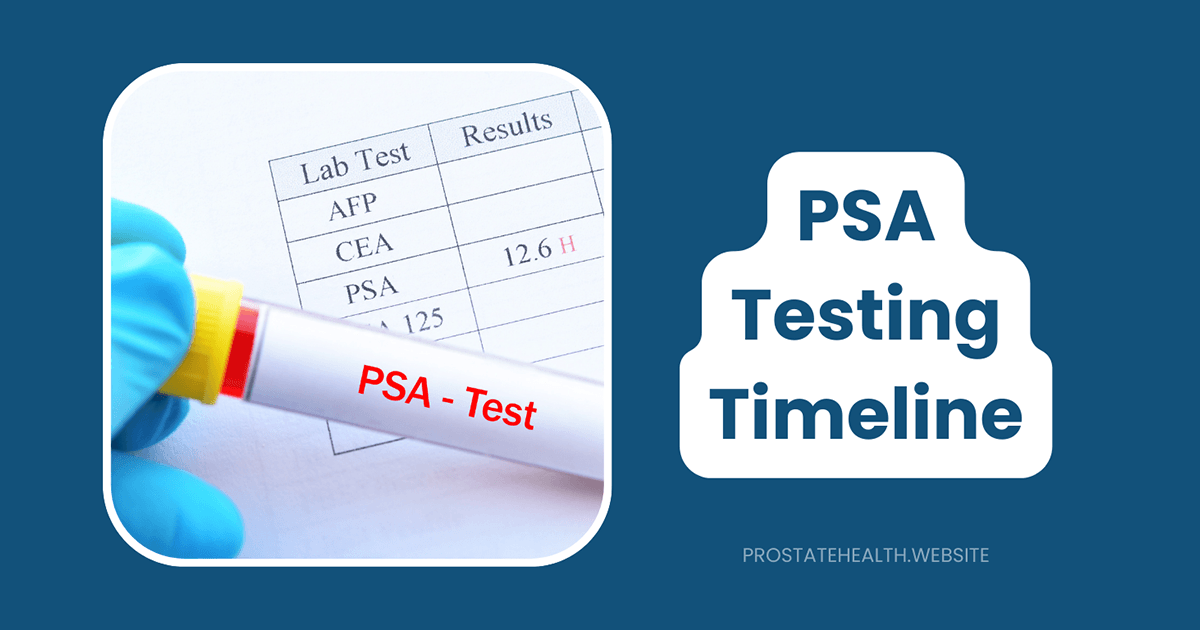PET Scans for Prostate Cancer: When Are They Recommended?

When it comes to prostate cancer, getting the right diagnosis at the right time can make all the difference. As imaging technology advances, PET scans have emerged as powerful tools that can detect prostate cancer with remarkable precision – often finding small tumors that traditional imaging might miss.
But when exactly should you get a PET scan? And which type is right for your situation? Let’s break down everything you need to know about this important diagnostic tool.
What Is a PET Scan and How Does It Work?
PET (Positron Emission Tomography) scans are advanced imaging tests that help doctors detect cancer throughout the body. Unlike CT scans or MRIs that primarily show anatomical structures, PET scans reveal how tissues and organs are functioning at the cellular level.
Here’s how it works in simple terms:
- You receive an injection of a radioactive tracer (don’t worry, the radiation exposure is minimal and safe)
- The tracer travels through your bloodstream and collects in areas with higher metabolic activity
- Cancer cells, which typically use more energy than normal cells, absorb more of the tracer
- The PET scanner detects these “hot spots” of tracer accumulation
- A computer creates detailed 3D images showing where cancer might be present
For prostate cancer specifically, specialized tracers have been developed that target molecules found predominantly on prostate cancer cells, making detection more accurate than ever before.
Types of PET Scans for Prostate Cancer
Not all PET scans are created equal when it comes to prostate cancer. The type of radioactive tracer used makes a significant difference in what can be detected. Here are the main types you should know about:
PSMA PET Scans
PSMA (Prostate-Specific Membrane Antigen) PET scans have revolutionized prostate cancer imaging. These scans use tracers that bind specifically to PSMA, a protein found in abundance on prostate cancer cells.
The FDA has approved several PSMA tracers, including:
- Gallium-68 PSMA-11: Approved in December 2020
- 18F-DCFPyL (Pylarify): Approved in May 2021
- 64Cu-SAR-bisPSMA (Gozellix): Recently approved for recurrent disease
PSMA PET scans are remarkably sensitive, detecting prostate cancer with 92% accuracy compared to 65% for conventional imaging. This makes them particularly valuable for finding small metastases that might otherwise be missed.
“PSMA PET imaging has significantly influenced prostate cancer management by enabling precise detection of metastatic lesions, often changing treatment plans in nearly 30% of cases.” – Journal of Nuclear Medicine, 2025
Fluciclovine (Axumin) PET Scans
Fluciclovine F18 (brand name Axumin) was approved by the FDA in 2016 specifically for detecting recurrent prostate cancer. This amino acid-based tracer is taken up by both prostate cancer and some normal tissues.
While not as sensitive as PSMA PET at very low PSA levels, Axumin PET still offers significant advantages over conventional imaging:
- Detection rate of 72% when PSA is below 1.0 ng/mL
- Nearly 100% detection when PSA exceeds 2.0 ng/mL
- Widely available at many imaging centers across the country
FDG PET Scans
FDG (fluorodeoxyglucose) PET scans are the most common type used for many cancers, but they have limitations for prostate cancer. Because most prostate cancers have relatively low metabolic activity, they often don’t show up well on FDG PET.
However, FDG PET can be valuable in specific situations:
- Advanced or aggressive prostate cancer
- When cancer has become resistant to hormone therapy
- When PSMA expression is low or absent
- For monitoring response to certain treatments
When Are PET Scans Recommended for Prostate Cancer?
The 2025 guidelines from major urological and oncological organizations have clarified when PET scans should be used for prostate cancer. Here are the key scenarios:
1. Initial Staging of Newly Diagnosed Prostate Cancer
Not everyone with prostate cancer needs a PET scan at diagnosis. The recommendations depend on your risk category:
- Low-risk prostate cancer (PSA <10 ng/mL, Gleason score ≤6, stage T1-T2a):
- PET scans are not recommended as the risk of metastasis is less than 1%
- Routine bone scans are also discouraged for this group
- Favorable intermediate-risk:
- PET scans generally not needed unless other risk factors present
- Only about 5.8% show metastatic disease on PSMA PET
- Unfavorable intermediate-risk (Gleason score 3+4=7 with >50% positive cores or multiple intermediate-risk features):
- PSMA PET/CT is recommended if available
- Approximately 13% show metastatic disease on PSMA PET
- High-risk or locally advanced (PSA >20 ng/mL, Gleason score ≥8, or stage ≥T3):
- PSMA PET/CT strongly recommended
- If unavailable, conventional imaging (CT and bone scan) should be performed
- 22-62% show metastatic disease on PSMA PET depending on risk factors
2. Biochemical Recurrence After Treatment
Biochemical recurrence means your PSA level is rising after initial treatment (surgery or radiation), suggesting the cancer has returned. This is where PET scans truly shine:
- For post-prostatectomy patients with PSA ≥0.2 ng/mL
- For post-radiation patients with PSA ≥2 ng/mL above their lowest post-treatment level
- When PSA doubling time is rapid (less than 6 months)
The 2025 AUA/ASTRO/SUO guidelines specifically recommend PSMA PET for biochemical recurrence to guide salvage therapy decisions. The detection rates vary by PSA level:
| PSA Level (ng/mL) | PSMA PET Detection Rate | Axumin PET Detection Rate |
| <0.5 | 40-50% | 30-40% |
| 0.5-1.0 | 50-60% | 45-55% |
| 1.0-2.0 | 60-70% | 55-65% |
| >2.0 | 80-95% | 70-90% |
3. Treatment Planning and Monitoring
PET scans are increasingly used to guide treatment decisions:
- Before radiation therapy: To define treatment fields accurately
- Before metastasis-directed therapy: To identify oligometastatic disease (limited number of metastases)
- During treatment: To monitor response, especially to newer therapies
- Before PSMA-targeted therapy: To confirm PSMA expression in tumors
4. Advanced or Castration-Resistant Prostate Cancer
For men with advanced prostate cancer, especially those who have become resistant to hormone therapy, a combination of imaging may be recommended:
- PSMA PET to identify PSMA-expressing lesions
- FDG PET to identify aggressive disease that may have low PSMA expression
- Bone scans to evaluate overall bone involvement
Benefits of PET Scans Over Conventional Imaging
The advantages of PET scans, particularly PSMA PET, over traditional CT scans and bone scans include:
- Higher accuracy: 27% more accurate than conventional imaging (92% vs. 65%)
- Better detection of small lesions: Can detect metastases as small as 2-3mm
- Fewer inconclusive results: Only 7% inconclusive compared to 23% for conventional imaging
- Whole-body assessment: One scan can evaluate all potential sites of disease
- Impact on treatment: Changes management decisions in approximately 30-50% of cases
Limitations and Considerations
While PET scans offer significant advantages, they do have some limitations:
- Cost and insurance coverage: PSMA PET scans can cost $6,000-$7,000, though Medicare now covers them for appropriate indications
- Availability: Not all imaging centers offer specialized prostate cancer PET scans
- False positives: Some benign conditions can mimic cancer on PET scans
- False negatives: Very small tumors or those with low tracer uptake might be missed
- Timing considerations: Hormone therapy can affect PSMA expression and scan results
Preparing for Your PET Scan
If your doctor has recommended a PET scan, here’s what you can expect:
- Before the scan:
- For Axumin PET: Fast for 4+ hours and avoid exercise for 24 hours
- For PSMA PET: No special preparation usually required
- Inform your doctor about all medications and supplements
- Discuss any anxiety about the procedure
- During the scan:
- You’ll receive an injection of the radioactive tracer
- There’s a waiting period (typically 45-60 minutes) for the tracer to circulate
- The actual scanning takes about 30 minutes
- You’ll lie still on a table that moves through the scanner
- The procedure is painless
- After the scan:
- No special precautions are typically needed
- The radioactive tracer clears your body within a day
- Your doctor will discuss the results with you, usually within 1-2 days
The Future of PET Imaging for Prostate Cancer
The field of prostate cancer imaging continues to evolve rapidly. Some exciting developments include:
- New PSMA tracers with improved properties and availability
- AI-assisted interpretation to enhance detection accuracy
- Theranostic applications where the same targeting molecule used for imaging can deliver therapy
- Combined PET/MRI for even more detailed assessment
- Personalized imaging protocols based on genetic and molecular features of your cancer
When to Talk to Your Doctor About a PET Scan
Consider discussing PET imaging with your doctor if:
- You’ve been newly diagnosed with intermediate or high-risk prostate cancer
- Your PSA is rising after surgery or radiation
- You’re considering salvage or focal therapy options
- You have advanced prostate cancer and are evaluating treatment options
- Your conventional imaging results are inconclusive
Conclusion
PET scans, particularly PSMA PET, have transformed how we detect and manage prostate cancer. By providing more accurate information about the location and extent of disease, these scans help doctors and patients make better-informed decisions about treatment.
While not every man with prostate cancer needs a PET scan, understanding when they’re recommended can help you have more productive conversations with your healthcare team. As with any medical procedure, the decision should be individualized based on your specific situation, in consultation with your doctor.
Have you had experience with PET scans for prostate cancer? Share your experience in the comments below to help other men navigating this journey.






